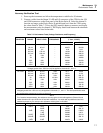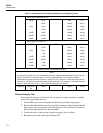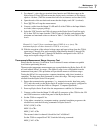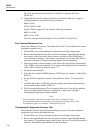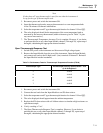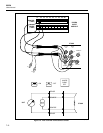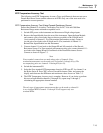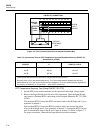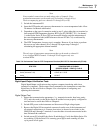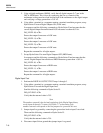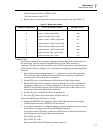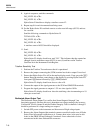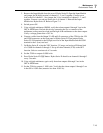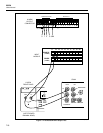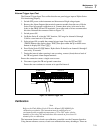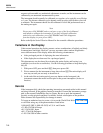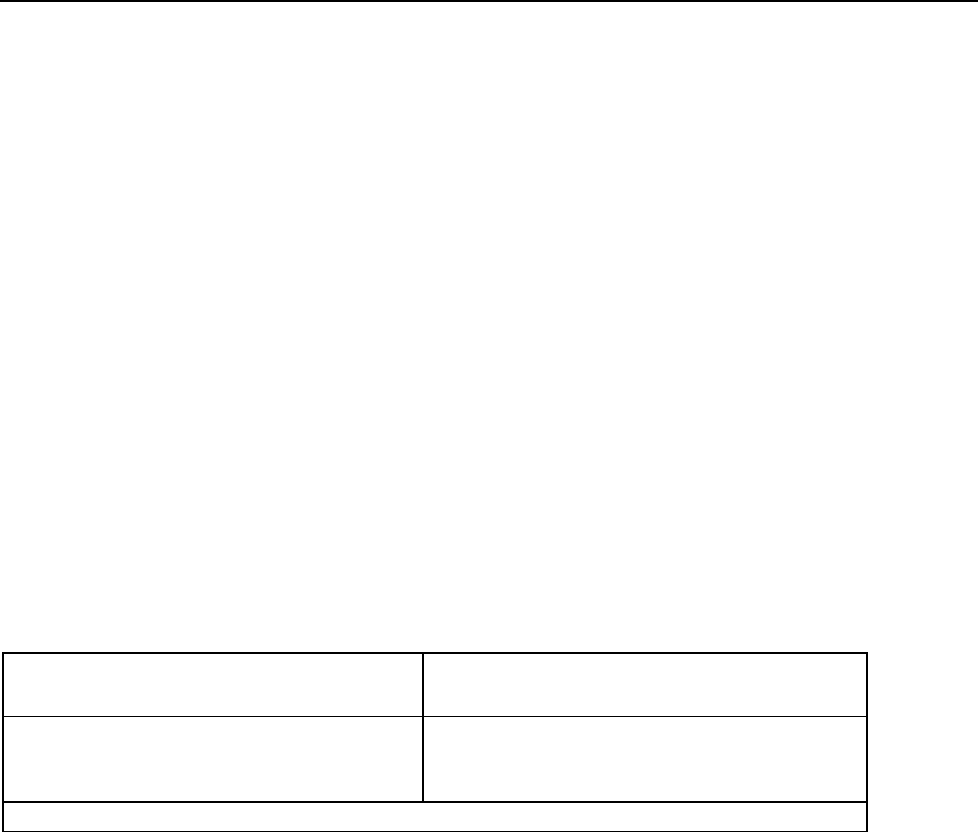
Maintenance
Performance Tests
7
7-15
Note
Four-terminal connections are made using pairs of channels. Four-
terminal measurements can be made only on channels 1 though 10 (n).
Their accompanying pairs are channels 11 through 20 (n+10).
3. Switch the instrument ON.
4. Insert the RTD probe and a mercury thermometer in a room temperature bath. Allow
20 minutes for thermal stabilization.
5. Dependent on the type of connection made in step 2, select either the two-terminal or
four-terminal RTD temperature function, RTD type PT (DIN/IEC 751), for channel
1 on the Hydra Series II. Press M and ensure the display reads the temperature of
the room temperature bath (within tolerances shown in Table 7-6) as measured by
the mercury thermometer.
6. The RTD Temperature Accuracy test is complete. However if you desire to perform
this test on any other channel (0 or 2 through 20) repeat steps 1 through 5
substituting the appropriate channel number.
Note
The only type of temperature measurement that can be made on channel 0
is two-terminal RTD. Channels 11 through 20 will support only two-
terminal RTDs.
Table 7-6. Performance Tests for RTD Temperature Function (DIN/ IEC 751 Amendment 2)(ITS-90)
RTD TYPE TEMPERATURE ACCURACY
SPECIFICATIONS 1 YEAR @ 18-28°C
2-wire (channel 0) -0.54°C to 0.59°C
2-wire (channels 1-20) -0.54°C to 11.54°C
4-wire ±0.54°C
Assumes RTD R0 is set to 100.00 e for each channel.
Digital Input/Output Verification Tests
Digital Input/Output verification testing requires computer interfacing with a host
(terminal or computer). The host must send commands to the instrument to control the
digital lines for this test. Refer to Chapter 4 for a description of configuring and
operating the instrument.
Digital Output Test
1. Ensure that communication parameters ( i.e., transmission mode, baud rate, parity,
CTS, and echo mode) on the Hydra Series II and the host are properly configured to
send and receive serial data. Refer to Chapter 4.
2. Switch OFF power to the instrument and disconnect all high voltage inputs.
3. Remove the Digital I/O ten terminal connector from the rear of the instrument and
all external connections to it. Connect short wires (to be used as test leads) to the
GROUND and 0 through 7 terminals. Leave the other wire ends unconnected at this
time. Reinstall the connector.
4. Switch power ON to both Hydra Series II and the host. Verify that Hydra Series II is
not scanning. If Hydra Series II is scanning, press Q to turn scanning off, then
cycle power off-on again.



